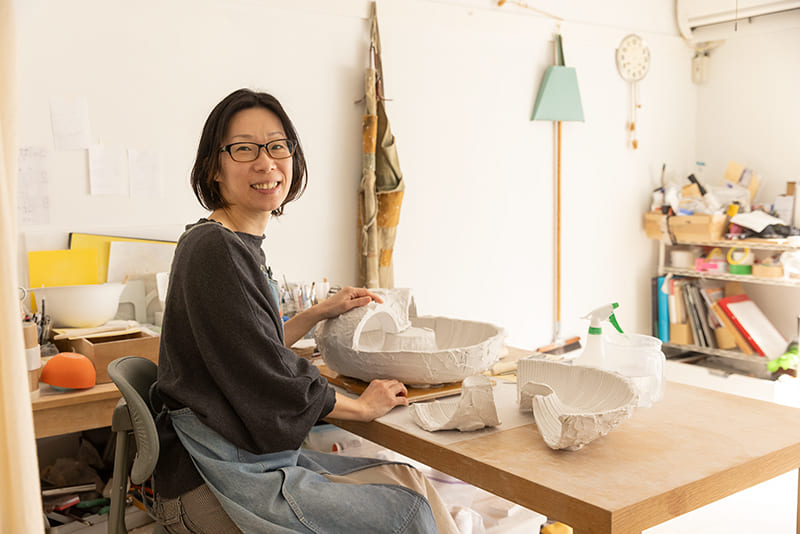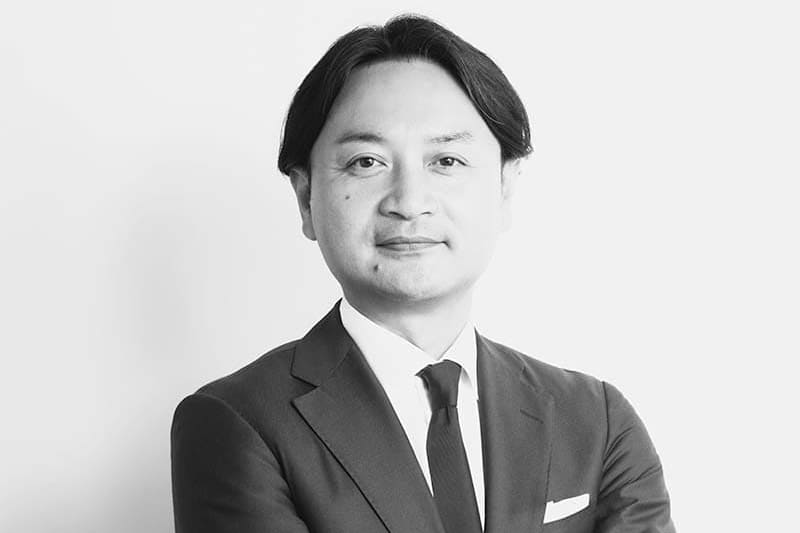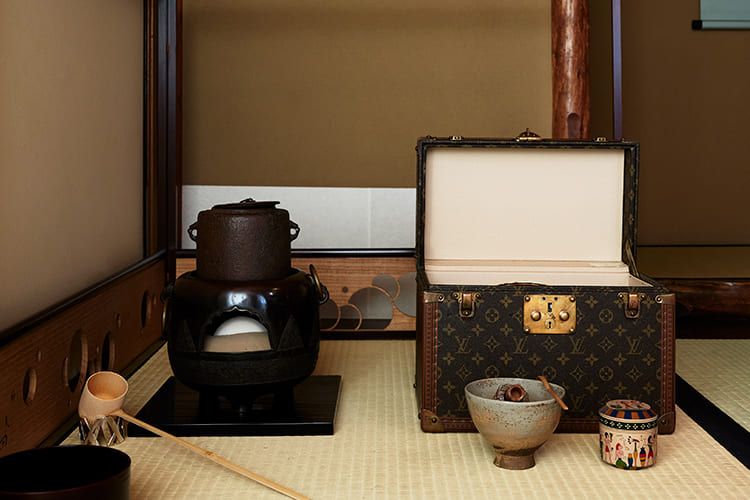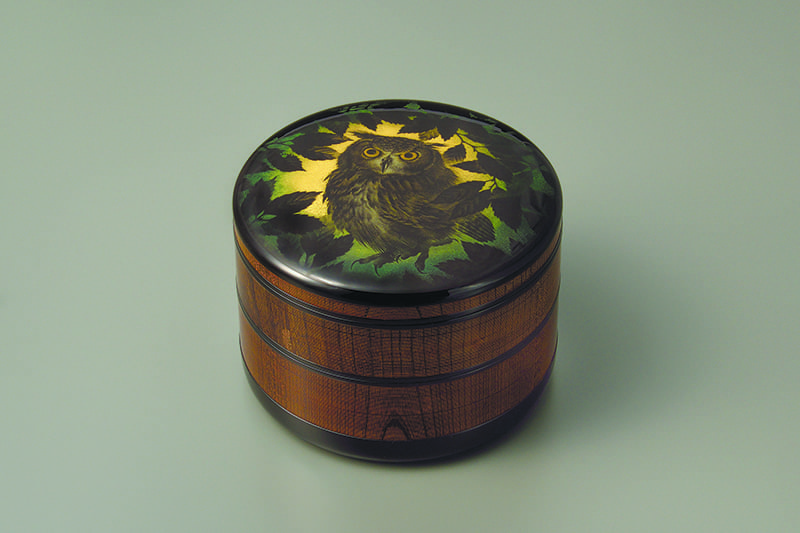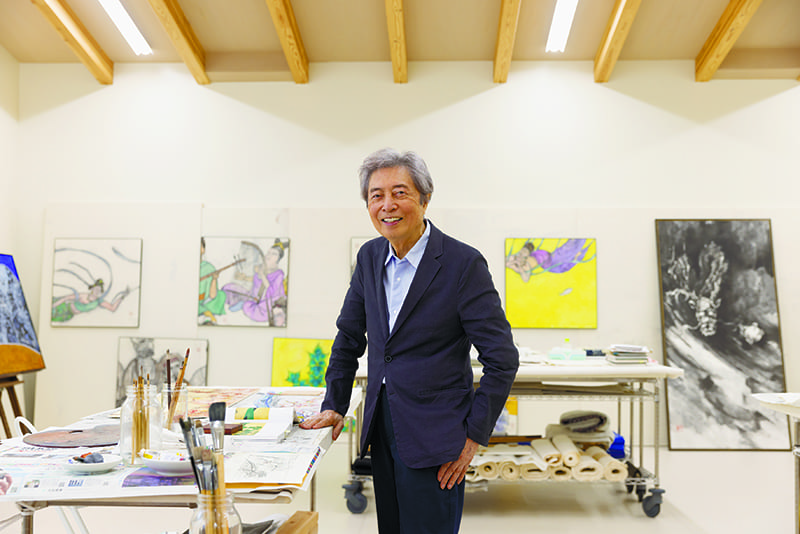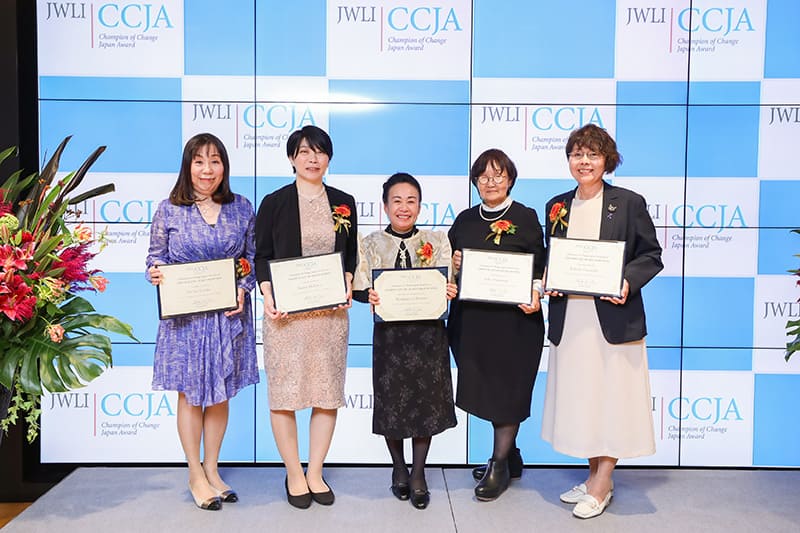September 29, 2023
Appreciating tea ceremony utensils
ITEMS
The tea ceremony is the most social expression of the way of tea. In the past, when museums did not exist, it was also a place to appreciate tea ceremony utensils as works of art and develop an aesthetic appreciation. This has not changed in modern times, and tea ceremonies remain special opportunities to experience and enjoy items of rare beauty.
Within a tea ceremony, the act of observing and appreciating the utensils is called “haiken,” a humble word meaning “to look.” It involves thinking about and appreciating the host’s choice of utensils in accordance with the theme of the ceremony. The decorations in the waiting room, the alcove decoration in the main room, vessels decorated with names of sweets, tea bowls and matcha scoops: These are the true “stars” of the ceremony and each provides clues as to the host’s true intention for the ceremony. As the ceremony progresses, the main guest asks questions on behalf of all the guests. The process feels a little like solving a mystery, playing in a jazz session or discussing an art installation with the artist themself, and through this process the host and guests come to a common understanding. So, imagine you have been invited to a tea ceremony. Let’s take a moment to appreciate the carefully chosen utensils.
Lid rest
Atlas silver bracelet (Tiffany & Co.)
Rests used to hold the lids of pots and ladles are considered fine tea utensils. Dating from different eras and made in a range of materials, they may be cut from bamboo, perhaps including the signature of a tea ceremony master, while others may be ceramic and date back to the Ming Dynasty (1368–1644) in China. This sterling silver lid holder is actually a bracelet. It features a powerful design of connected Roman numerals, inspired by the Atlas clock that was installed at Tiffany’s flagship store on Fifth Avenue in New York in 1853.
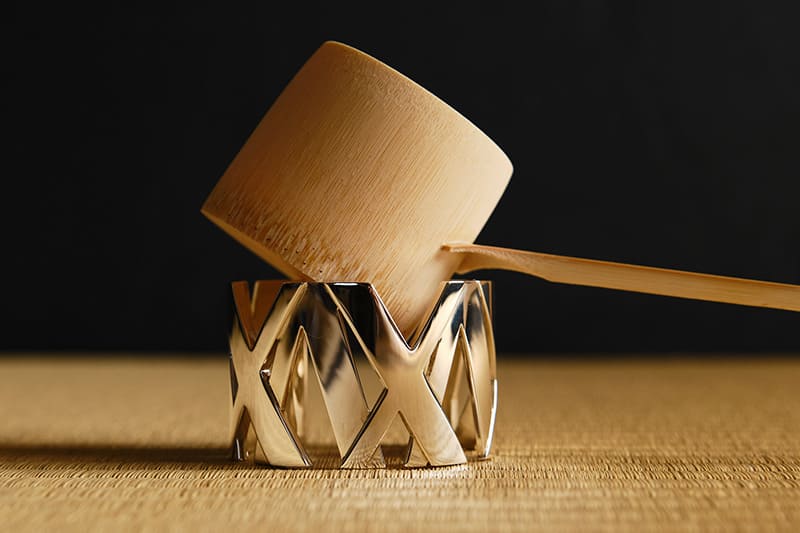
FRONT: Hanging scroll
Simplicity & Balance
(SYUKURO MANABE)
Hanging scrolls are important not just for what is written on them but who wrote them. Guests save their most respectful bows for hanging scrolls, with their hands on their laps and their heads bent down, but the sign of respect is not directed at the scroll itself, rather at the person who wrote it. This calligraphy was handwritten by Syukuro Manabe, winner of the 2021 Nobel Prize in physics, and features his personal motto. It is mounted to fit the alcove. The message suggests of a way of thinking that is closely linked with Zen.
BOTTOM: Flower vase
Venetian glass
(Tiffany & Co.)
Flowers convey the season and symbolize the passing of time, and they are the only living things in the tearoom besides people. Tea masters are particularly careful with their choice of flowers and vases. Following the teachings of Sen no Rikyu, flowers are to be displayed “as in the wild.” This vase was designed by Louis Comfort Tiffany, the son of the company’s founder who joined Tiffany as artistic director in 1902. It is made of Venetian glass hand-blown by sculptor Archimede Seguso.
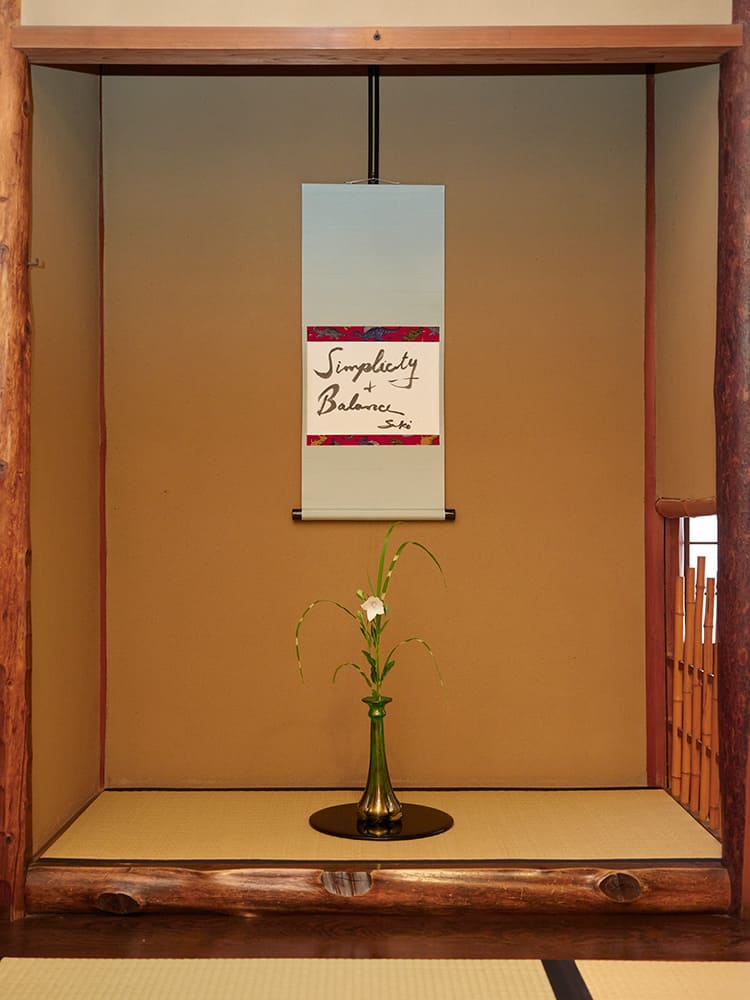
INSIDE: Tea scoop
“Tabigoromo” (Jian Matsunaga)
OUTSIDE: Tea bowl
“hansu” (Korean tea bowl)
The tea scoop used to scoop matcha is sometimes known as the “tea master’s sword.” Well-known historical tea masters have included military commanders and feudal lords from the Sengoku Period, and they often poured their souls into crafting their own tea scoops from bamboo. In the 20th century, business people became well-known tea masters. This tea scoop was made by Yasuzaemon Matsunaga, a leader in the post-war electric energy industry. Based on its appearance and color, this tea bowl would be categorized as “hansu” (meaning “interpreter”), and it was made in Korea in the 17th century. It has been inscribed with the name by Sokei Kobori, the 12th head of the Enshu school, which was founded by Enshu Kobori, a famous tea master during the Sengoku Period.
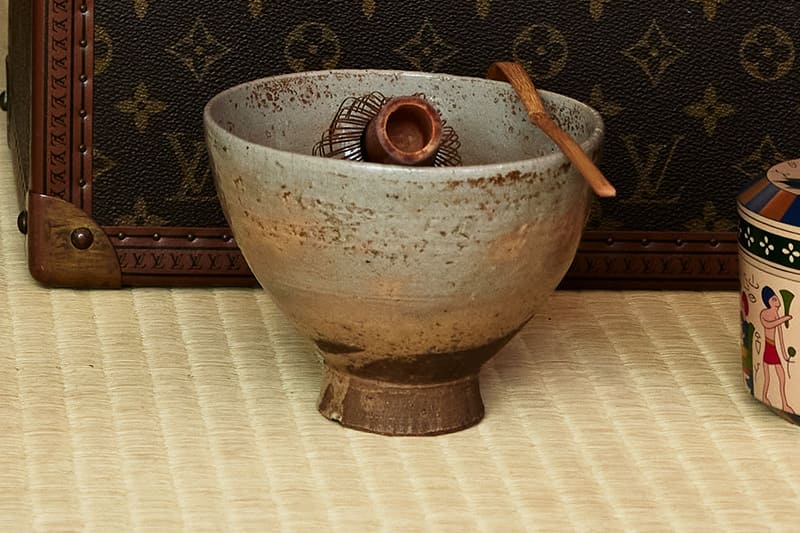
Tea Bowl
Kasumimishima Cross
(Noritsune Asami)
At large tea parties where dozens of guests gather at once, in addition to there being one “omojawan” (main tea bowl) that is served to the main guest, there are several one-of-a-kind “kaejawan” (alternate tea bowls), and several “kazujawan” (sets of identical tea bowls). The kazujawan used in this ceremony were custom-ordered. Their base was decorated with a cross design, a reference to the fact that Zuiho-in Temple, where the ceremony was held, is the family temple of a former Christian feudal lord, Otomo Sorin. Noritsune Asami, who made the bowls, was born in Kyoto to a family that has made pottery for generations, and his work is both traditional and modern.
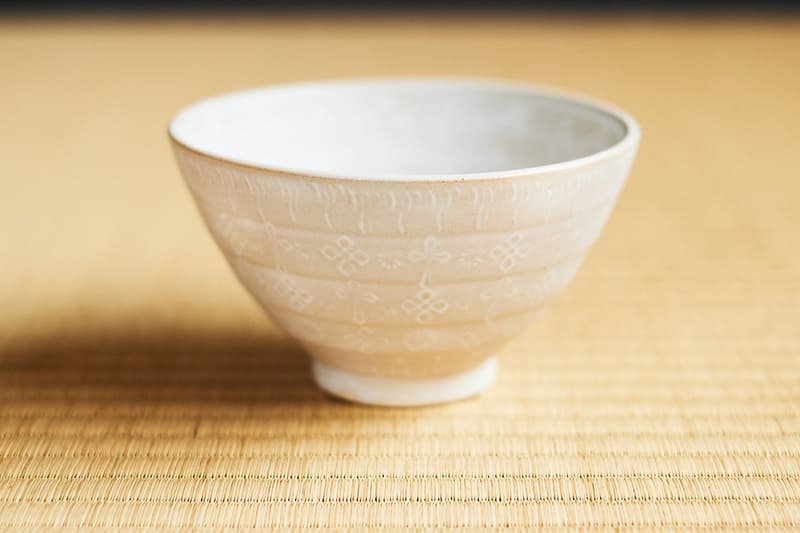
Tea Bowl
Bleus d’Ailleurs
(Hermès)
Blue Daieur is a series of porcelain tableware from Hermès that has been loved by generations of consumers. A distinctly oriental flavor is created by the deep blue color, which is reminiscent of blue ceramics from Jingdezhen in Guangxi Province, China, that were long favored by tea masters, and also by the traditionally auspicious hexagonal tortoise shell pattern. The bowl, which is difficult to find since it was announced in 2022 that production would cease, has the perfect shape and size for a tea bowl.
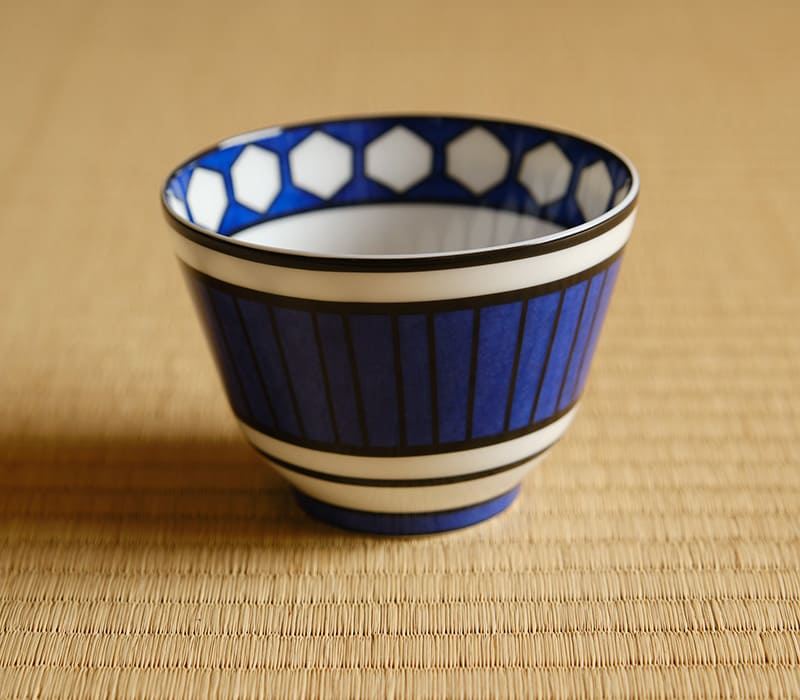
Sweet tray
Bronze
(Tiffany Studio)
Following the main sweet, which was named “stripes,” the higashi dried sweets with the inscription “stars” were served. Together, they were intended to form the Stars and Stripes flag. The cute yellow and white stars are made from amber sugar and a jelly-like substance made using agar. Over time, The bronze plate made by Louis Comfort Tiffany at Tiffany Studio in the early 1900s has a rustic flavor that fits the aesthetics of the tea ceremony.
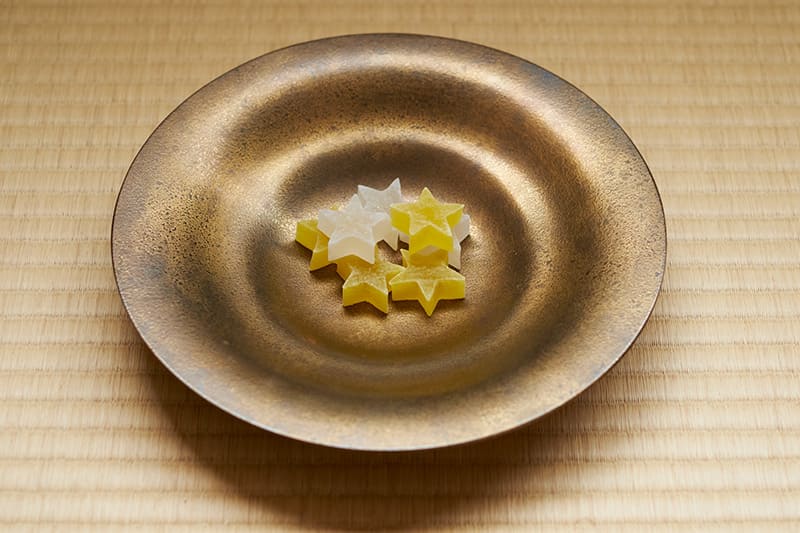
Sweet container
Venetian glass
(Tiffany & Co.)
Japanese sweets made from boiled white bean paste and sugar are molded, colored and inscribed with messages matching the theme of the tea ceremony. The plates used to serve the main sweets have a thumbprint design by Elesa Peretti, well known as the designer of Tiffany’s Open Heart Pendant. Made of Venetian glass by sculptor Archimede Seguso, each piece is handcrafted using a method of encrusting 24-carat gold leaf into glass. The main sweets are inspired by the stripes of the Star-Spangled Banner, and they also match neatly with the tatami mats on the floor.
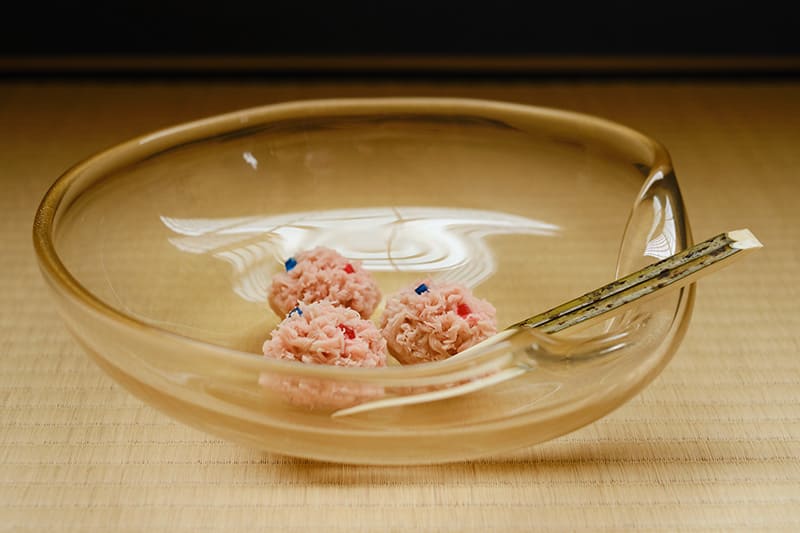
Sweet tray
Silver
(Tiffany & Co.)
Sweets are occasionally served on a large platter for guests to share, and at other times each guest’s portion is served on a separate plate. This plate was created by Tiffany to commemorate the release of a new collection of jewelry, and it is not for sale. Perfect for summer, the design features palm and monstera leaves that grow in tropical countries. Also used were a plate featuring a carp design that dated back to around the 1870s and 1880s, when Tiffany became the first company in the United States to begin using Japanese-style motifs.
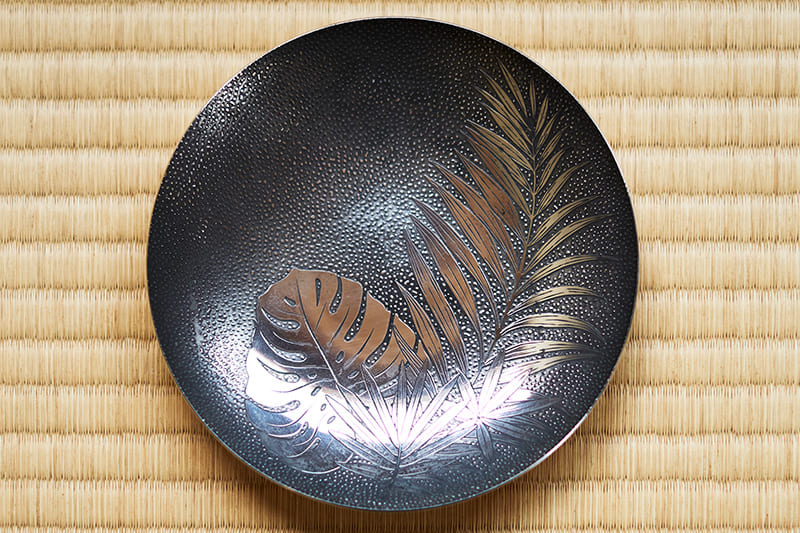
Incense container
Sterling silver enamel mussel shell pill box
(Tiffany & Co.)
Decorations adorn the antechamber that leads to the main room. On the stove there is a pot, and burning charcoal emits the scent of fragrant wood. At tea ceremonies with many guests, an incense container filled with fragrant wood is displayed in the alcove as a signal that regular etiquette will be relaxed. Today, a pill case made of enamel on the outside and sterling silver on the inside is designed to look like an incense case, and a box with signature by Shodo Maeda of Zuiho-in Temple is attached. It features the Zen phrase “Seiryu ni kandan nashi” “Clear water gently runs without ceasing” written by Yuyusai, who took over as the 15th head of the Omotesenke school of tea ceremony in 2018. It is accompanied by a piece of cloth made by Yuko Tsuchida.
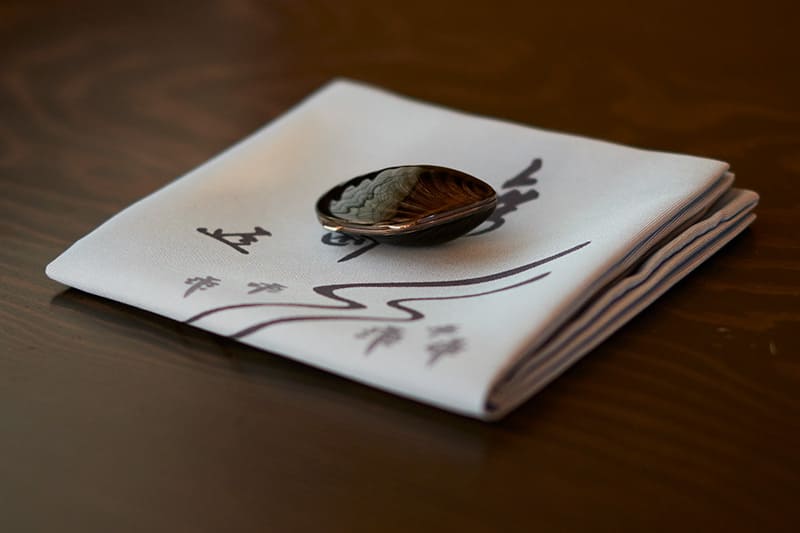
Fresh water container
Harcourt with gold paint
(Baccarat)
A fresh water container is placed next to the pot so that it can be replenished or cooled if the water gets too hot. It would generally be ceramic, but glass is popular in the summer for its fresh and cool appearance. The Harcourt, an iconic Baccarat product, was created in 1841 based on a glass ordered by King Louis-Philippe of France. Paired with a custom-made lacquered lid, it serves admirably as a tea utensil.
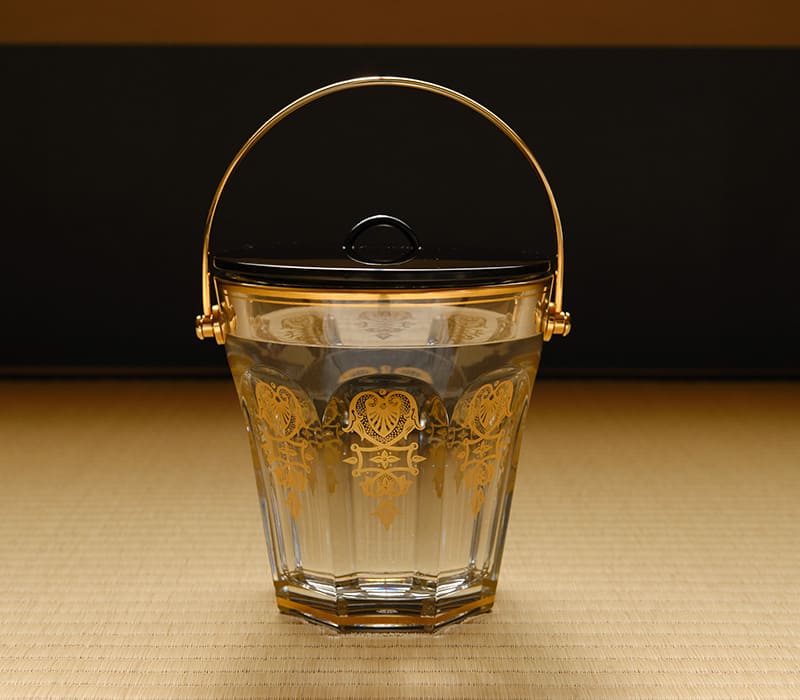
Paperweight
Lacquer bangle (Tiffany & Co.)
At a tea ceremony, before entering the main room where the sweets and tea are served, participants are taken to a waiting room known as a “yoritsuki.” This is where guests prepare themselves and calm their minds. This room is also decorated by the host with hanging scrolls and ornaments to entertain the guests. This time, a ledger recording all the utensils used in the tea ceremony was placed under the hanging scroll. The paperweight used was a Tiffany doughnut bangle bracelet designed by Elesa Peretti and finished by Japanese lacquer artisans.
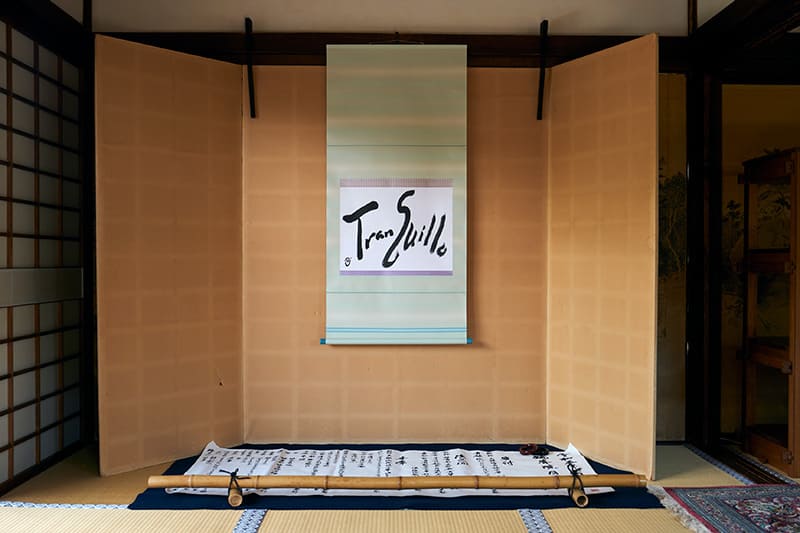
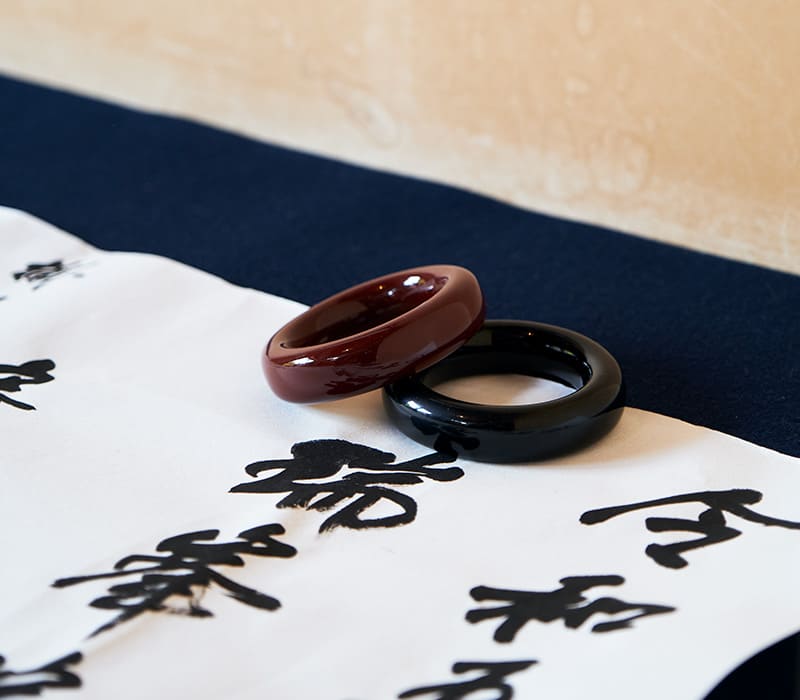
茶道具を拝見し、道具の声を聴く。
茶会は社交の場であると同時に、かつて、美術館がなかった時代には茶道具という美術品を間近に鑑賞し、美意識を養う場でもあった。現代においても希少な品々を味わうことができる特別な機会となっている。
そんな茶会において、客が道具を見ることを「拝見」と呼ぶ。「拝見」とは「見る」の謙譲語。亭主が決めたテーマに沿って選んだ道具を尊重して見るのだ。客は“演者”たる道具が語る言葉に熱心に耳を傾ける。寄付(よりつき)の飾り、本席の床間、菓子の銘から盛られた器、茶碗や茶杓(ちゃしゃく)など、あらゆる道具を通じて、亭主の真意を汲み取る努力をする。そして、会が進行するなか、すべての客を代表してメインゲスト、正客(しょうきゃく)と亭主による問答が行われる。そこでは客が亭主のもてなしに対して、感謝の意や道具を通じて感じたことを述べるほか、質問も行われる。そんな、まるで謎解き、ジャズのセッションやアートのインスタレーションのような過程を経て、亭主と客の心がひとつにる。あなたも紙面から亭主のメッセージを感じ取って欲しい。
Return to Sustainable Japan Magazine Vol. 28 article list page

